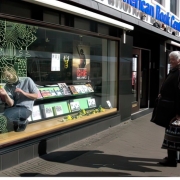A strong opening chapter is akin to a shop window
It’s self-evident why it’s important to have a strong opening chapter to a story. It’s more than just the scene-setter, it’s the hook to grab the attention of readers – the one big opportunity for an author to convince his paying guests that it’s worth their while to stick around.
It’s all well and good having fancy cover blurbs and trailers to entice readers into your parlour but when they get tucked into the first course you had better be at your writing best. Killer opening chapters are what ‘sells’ you as a writer, so make sure you bring your A-game to the table.
It doesn’t matter what your book is about, or how you intend to unfold the story, you MUST ensure there’s enough going on in those opening pages to convince the customer that this is a journey he wants to undertake with you.
Often what is required is little more than attention to detail. The first chapter should be written, rewritten, edited, re-edited, tweaked and re-tweaked. For goodness sake don’t fall flat on your face with typos, poor grammar, weak dialogue, or action that wouldn’t get the attention of a nervous fly.
The first chapter is your shop window. You simply can’t afford to take any risks with it.
The ante has been upped even more these days with the introduction of Amazon’s ‘Click Inside’ preview facility. Online eBook buyers now rarely commit to a purchase without sampling the goods on offer – in this case the opening chapter of your book. It’s here they’ll learn about your style as a writer, the kind of story you’re about to tell, and whether it ‘fits’ with their expectations.
Tick the right boxes and you’ve got a sale. The alternative is to languish in Click Inside’s limbo land of lost opportunities!
There’s no rocket science to the approach you need to take. If you’re an author, you’ll also be a reader. Put yourself on the other side of the shop-counter and take account of what it is that draws you into a book. What kind of opening chapters are likely to hook you?
There are thousands of ways to begin a story. Depending on the genre or context of the opening sequence, there’s no such thing as one way being better than another. Authors are individuals and each story has its own separate lure, so don’t go looking for a pre-formatted way of starting.
The only advice I would dare to give is to beware of what I always refer to as flowery descriptive sequences that are usually more about the author showing off his/her command of language and flair for the literary craft than it is about setting a strong base for their story.
We know you’re a writer, get on with it! Stop holding up the train while you discuss its ugly carbon omissions and the danger they’re doing to the environment!
There are plenty of opportunities for you to get flowery (if that’s what rocks your boat) but don’t do it in the opening lines. Leave that for the travel writers and tourist bloggers.
If you want to convert a window-shopper into a customer, you’d do well to put some substance into what you’re putting on show. It’s their first serious look at you as a writer – for goodness sake put on your Sunday best and make a good impression!





Leave a Reply
Want to join the discussion?Feel free to contribute!